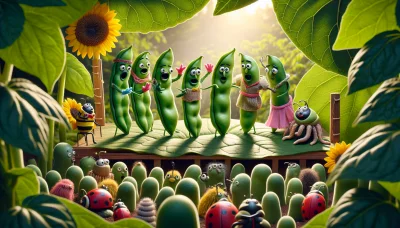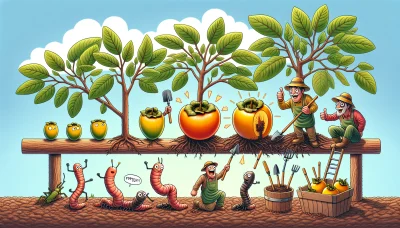Are strawberries perennials Quiz
Test Your Knowledge
Question of
Are Strawberries Perennials?
Understanding the lifecycle of strawberries is essential for gardening enthusiasts aiming to cultivate these beloved fruits. The classification of strawberries as perennials, annuals, or biennials directly influences planting strategies, care, and harvesting techniques. This topic holds great relevance as it guides gardeners in maximizing their yield and ensuring the health and longevity of their strawberry plants.
Understanding Strawberry Plants
Strawberry plants are fascinating specimens in the world of botany, belonging to the genus Fragaria. They are perennial plants, meaning they can live and bear fruit for several years. However, their productivity tends to decline after a few years, which is why many gardeners choose to replant them periodically. Strawberries grow through a cycle that begins with germination from a seed or, more commonly, through the spreading of runners from existing plants. These runners, or stolons, allow the strawberry plant to spread across the ground, taking root and forming new plants as they go.
The growth habit of strawberry plants is such that they form a rosette of leaves close to the ground. From this rosette, flowering stems emerge, leading to the development of strawberries after pollination. Strawberries thrive in temperate climates, although they can be grown in a wide range of environments with the right care. They typically bear fruit in the spring or early summer, but some varieties are known as "everbearing," producing fruit continuously throughout the growing season.
Perennial, Biennial, or Annual?
Strawberries are generally classified as perennials, meaning they can live and produce fruit for several years. However, the way they are cultivated can influence their classification in a garden setting. Some gardeners treat them as annuals, planting new strawberries each year to ensure the best yield. There are also different types of strawberries, including June-bearing, everbearing, and day-neutral varieties, which can affect how they are grown and managed. While the plants themselves are perennials, their fruit-bearing cycles and the methods used by gardeners can vary, leading to some confusion regarding their classification.
Caring for Strawberry Plants
- Choose the Right Soil: Strawberry plants thrive in well-drained, loamy soil with a pH between 5.5 and 6.8. Before planting, enrich the soil with compost or aged manure to boost fertility.
- Watering: Water the plants adequately, especially during the dry periods. Strawberries need about 1 to 1.5 inches of water per week. Avoid overhead watering to reduce the risk of disease.
- Sunlight: Ensure your strawberry plants receive at least 6 to 8 hours of sunlight daily. Full sun is essential for the best yield and quality of fruit.
- Mulching: Apply straw, pine needles, or shredded leaves around the plants to help retain moisture, suppress weeds, and keep the fruit clean.
- Fertilizing: Feed your strawberry plants with a balanced fertilizer during the growing season to support healthy growth. Avoid high nitrogen fertilizers as they can promote leaf growth at the expense of fruit production.
- Pruning and Renovation: After harvesting, prune away old and diseased leaves. In perennial plantings, thin out crowded beds to ensure vigorous plants and high-quality fruit in the next season.
- Protecting from Pests and Diseases: Keep an eye out for common pests such as slugs and birds. Use netting for birds and organic slug baits if necessary. Practice crop rotation and maintain good sanitation to prevent diseases.
- Winter Care: In colder regions, cover your strawberry plants with straw or other insulating material to protect them during the winter. Remove the coverings in spring when the danger of frost has passed.
Common Challenges in Growing Strawberries
Gardeners who venture into growing strawberries often face several common issues that can impact the health and yield of their strawberry plants. One of the most significant challenges is dealing with various pests such as slugs, birds, and aphids, which are attracted to the sweet fruit and tender leaves. Diseases also pose a significant threat, with fungal infections like powdery mildew and botrytis gray mold being particularly troublesome. These diseases can spread quickly, especially in damp conditions, and can devastate a crop if not managed properly. Additionally, climate considerations play a crucial role in the success of strawberry plants. They require a specific range of temperatures for optimal growth and fruit production, and extreme weather conditions such as frost or excessive heat can damage the plants or reduce their yield. Understanding and addressing these challenges is essential for gardeners looking to enjoy a bountiful strawberry harvest.
Maximizing Your Strawberry Harvest
- Ensure your strawberries are planted in a sunny location with well-draining soil to promote healthy growth.
- Use a balanced fertilizer to nourish your plants. Applying a 10-10-10 fertilizer at the beginning of the growing season can provide the necessary nutrients.
- Keep the soil consistently moist, but not waterlogged, to prevent root rot and encourage fruit production.
- Prune your strawberry plants by removing dead or diseased leaves, and thin out crowded areas to improve air circulation.
- After the first year, remove runners to concentrate the plant's energy on fruit production. However, if you wish to propagate new plants, select a few healthy runners to root.
- Implement crop rotation every three to four years to reduce the risk of soil-borne diseases affecting your strawberries.
- Mulch around the plants with straw or pine needles to help retain soil moisture, suppress weeds, and keep the fruit clean.
- After harvest, cut back the foliage to about an inch above the ground to help rejuvenate the plants for the next season.
- Protect your strawberry plants from birds and pests by using netting or row covers.
- Consider growing strawberries in raised beds or containers if space is limited or soil conditions are not ideal.
FAQs on Growing Strawberries
| Question | Answer |
|---|---|
| What is the best time to plant strawberries? | Strawberries are best planted in early spring as soon as the ground is workable. |
| How much sun do strawberries need? | Strawberries require at least 6 to 8 hours of full sunlight per day. |
| What type of soil is best for strawberries? | Strawberries prefer well-drained, sandy loam soil with a pH between 5.5 and 6.8. |
| How often should strawberries be watered? | Water strawberries deeply but infrequently, about 1 inch per week more during hot, dry weather. |
| Do strawberries need fertilizer? | Yes, strawberries benefit from balanced fertilizer applied after planting and again in late summer. |
| How do you protect strawberries from birds and pests? | Use netting to protect the berries from birds and encourage natural predators for common pests. |
| When are strawberries ready to harvest? | Strawberries are ready to harvest when they are fully red and firm to the touch. |












